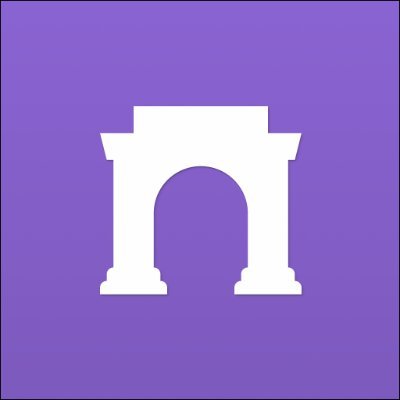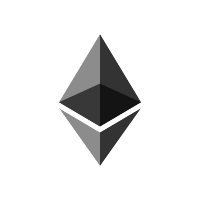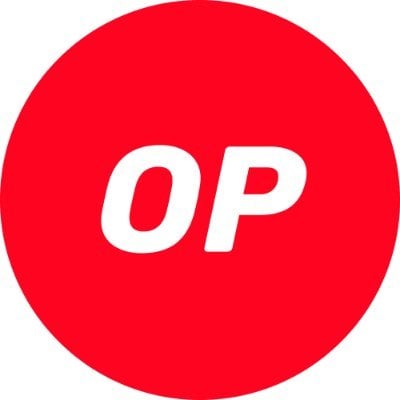Can running a Farcaster node make money? Understanding Ferrule's "social re-staking" economy
Original Title: 《Decentralizing Farcaster: Ferrule》
Authors: austbot, David Shuttleworth, JJ Alicea
Compiled by: Joyce, BlockBeats
Editor's Note:
The popularity of Farcaster has driven the community to further focus on the creator economy track. Recently, the ANAGRAM development team launched Ferrule, a protocol based on Farcaster aimed at decentralizing the Farcaster Hub and enhancing security. Ferrule allows anyone to build their own Farcaster client, ensuring user autonomy and ownership. The goal of Ferrule is to establish a scalable and sustainable network through Eigenlayer AVS, addressing the inconsistent incentives and centralization issues of client applications in the current Farcaster architecture by incentivizing node operators and implementing data sharding.
David Alexander, a partner at the ANAGRAM development team, explained the expectations for Ferrule, which began with his thoughts on the incentive system of the Farcaster ecosystem, hoping to further drive innovation and decentralization within the Farcaster ecosystem. BlockBeats has compiled the relevant content as follows:
One of the fundamental promises of blockchain is digital sovereignty and ownership. Traditional systems have fundamentally collapsed for a long time. The emergence of cutting-edge technologies allows us to transcend these systems and enter a new paradigm. Social media is one of the many systems that require massive reform. This perspective is neither new nor unique. Since the Bitclout era, developers, users, and investors have been advocating for decentralized social graphs, authentication layers, and everything that comes with them.
Many have tried before but failed. Now, Farcaster has emerged, a fully decentralized social network application built on Ethereum and powered by Optimism.
Background of Ferrule's Launch
Current State of Farcaster
Farcaster functions similarly to X (formerly Twitter) and Reddit. Users can quickly join the network, create profiles, post "casts" similar to tweets, and follow other users. Much of the heavy technical work is done by Warpcast, a Farcaster client that abstracts technical complexity, making the user experience seamless.
Unlike X and Reddit, Farcaster allows users to own their accounts as well as the social graphs and relationships they create with other users. This is a significant upgrade over existing traditional systems. Each user can freely move between different Farcaster applications, ensuring user autonomy and ownership within the client.
The architecture of Farcaster is as follows:
Hub: Similar to blockchain nodes, Hubs store data and listen for specific information about users on Ethereum and Optimism.
Client Applications: Applications used on the Farcaster platform, essentially on-chain key pairs and datasets that client application publishers can use to act on behalf of users, allowing them to post, read data, and perform other actions.
Farcaster has built a "fully decentralized" system that enables users to have portable identities across different client applications. This is akin to using Google to log into Facebook and X, but Farcaster goes further by making data portable as well. Different client applications can create unique user experiences based on the same data. For example, Warpcast feels like Twitter, while another application might feel more like Discord.
Client applications must connect to a Hub, but Hubs are not obligated to allow communication. Hubs are akin to web servers in Web2, and client applications can read or write data to the Hub for free. Typically, the teams developing client applications (like Warpcast) also run the Hub nodes they connect to, making them "operators" of the Hub. Anyone can run a Hub, and if the initial configuration points to other Hubs, a network is created.
Users can have portable cryptocurrency balances, and client applications can create fiat wallets or additional client application-specific cryptocurrency balances. For example, Warpcast users pay "warps" fees, which are used for global Farcaster storage and Warpcast-specific features.
This architecture is termed "fully decentralized" because it assumes that multiple client applications operate independently, and anyone building a client or connecting an application needs to run a node or purchase access to a node-running entity.
Urgent Issues
Misaligned Network Incentives:
Farcaster operates through Hubs, which store data and facilitate communication between Ethereum and Optimism. Hubs host APIs that allow client applications to read and write data. Users must pay storage fees by calling the "rent" function on Optimism smart contracts. This payment mechanism may reduce spam and bot accounts, but no part of the rent is allocated to node operators. As Farcaster grows, a single node may not be able to handle storage demands. Horizontal scaling or incentivizing node operators could address this issue.
Centralization of Client Applications:
Warpcast is a core contributor and creator of Farcaster and is the most widely used client application. If only one client dominates, Farcaster risks becoming another centralized social media platform. Client applications operate on behalf of users using a single key, similar to how web3 wallets function, but with considerable power. Integrating smart wallet technology could allow users to use their Farcaster key accounts as their primary wallets.
Ferrule: Introducing Incentivized Nodes for Farcaster
Farcaster's appeal lies not only in its technological achievements but also in the community it fosters. However, the ultimate form of Farcaster has yet to be realized. We now introduce Ferrule, a protocol built within Farcaster that enables anyone to build their own client for Farcaster.
Importance of Ferrule
Currently, Farcaster's economic model is limited. Specifically, there are no incentives to encourage people to run Farcaster Hubs, leading to Farcaster managing the entire network. While this is not fully centralized, it is also not completely decentralized, hence Farcaster is touted as "fully decentralized." The path toward a more decentralized network will greatly benefit from Ferrule.
The benefits of a fully decentralized network are significant. Like Ethereum and Solana, state growth is becoming an increasing issue. As more users join and interact, the burden of data storage falls entirely on Farcaster. This is not only a problem of centralization and scalability but also a sustainability issue regarding state growth. This problem will accelerate with widespread adoption.
Farcaster's growth shows no signs of slowing down, continuing to gain momentum with over 60,000 unique users daily, a 66% month-over-month increase. With exponential growth, user activity embedded in each unique account is also increasing. While anyone can run a Farcaster node, there are no incentives. Incentivizing node growth is crucial for optimal scaling of the system.
Ferrule is a new design for Farcaster Hubs that operates as an Eigenlayer Active Verification Service (AVS). It can leverage existing assets to secure and ensure the operation of Hubs and the proper functioning of the Farcaster protocol. Users will re-stake assets into Ferrule contracts, dynamically delegating assets to Hubs based on network behavior. Some staking rewards will be distributed as incentives to Hub operators, while part of the storage account rent costs will also be covered.
Currently, the data integrity checks of Farcaster Hubs are limited, and there is no economic incentive to prevent spam or manipulation. Ferrule aims to address this issue by ensuring that Hubs operate in a verifiable and secure manner. Ferrule nodes broadcast cryptographically verifiable proofs demonstrating their correct operation. Economic incentives encourage proper behavior, while inaction or malicious behavior will be penalized through slashing.
As Ferrule develops, it aims to address state growth and client/Hub centralization issues. Incentivized Hubs can create a routing system, ensuring they do not need to store all data and are rewarded for storing and providing data access. The design of Ferrule aims to make centralization less feasible by rewarding proper Hub behavior.
Ferrule Roadmap
Re-staking Mechanism:
Re-staking: Users can re-stake their existing assets (e.g., ETH or other compatible tokens) into Ferrule contracts. This staking process binds their assets to the security of Farcaster Hubs.
Dynamic Delegation: Staked assets are dynamically delegated to various Hubs based on network behavior and demand. This ensures the network remains secure and responsive to changes in usage patterns.
Incentives:
Rewards for Hub Operators: A portion of staking rewards and storage account rent costs will be allocated to Hub operators. This provides economic incentives for maintaining the integrity and performance of the network.
Economic Resistance: Economic penalties for inaction or malicious behavior by Hubs through a slashing mechanism. This ensures that Hubs have the motivation to operate correctly and securely.
Verifiable Operations:
Cryptographic Proofs: Ferrule nodes must broadcast cryptographically verifiable evidence of their correct operation. This evidence is used to ensure that operations performed by Hubs are legitimate and comply with network rules.
Consensus Mechanism: The AVS framework ensures that all Hubs operate in a verifiable manner, fostering a trustless environment where users can feel confident in the reliability of the network.
Data Sharding and Routing:
State Growth Management: To manage state growth, Ferrule combines data sharding and routing mechanisms. This approach ensures that no single Hub needs to store all data, distributing the storage load across the network.
Data Access Incentives: Hubs are rewarded for storing data and providing access. Proof of data storage is broadcast across the network, creating a map of data locations and ensuring efficient data retrieval.
Ferrule MPC
MPC Framework:
Multi-Party Computation (MPC): Ferrule MPC leverages MPC technology, allowing multiple parties to jointly compute functions while keeping inputs private. This ensures that sensitive user data remains confidential during collaboration.
Client and Connected Applications: The MPC framework enables the development of truly decentralized clients or connected applications on Farcaster. These applications can operate securely and independently, interacting with the network without compromising user privacy.
Authorization and Smart Wallet Integration:
Fine-Grained Authorization: Ferrule MPC supports the creation of authorization systems that allow users to delegate specific actions through their accounts. This is similar to emerging patterns in blockchain where users can authorize specific activities through wallets.
Smart Wallet Technology: Integrating smart wallet technology allows users to use their Farcaster key accounts as their primary wallets. This integration provides a seamless user experience, enabling users to manage their crypto assets and social interactions from a single account.
API and Data Interfaces:
Standardized Data Access Points: Hubs provide standardized data access points, ensuring that client applications can interact with network data consistently. This standardization simplifies the development of new applications and enhances interoperability.
Extended Object Model: Client applications (e.g., Warpcast) can extend the Farcaster object model to include additional features, such as pre-computed social graphs and behavioral data. This flexibility can create diverse and innovative user experiences.
Ferrule MPC is a library and a set of examples for teams to run decentralized clients or connected applications on Farcaster. If fully implemented, it will become a core part of Ferrule. While it is not yet fully ready for release, Ferrule MPC aims to spark discussions within the Farcaster community about addressing these urgent issues.
We hope Ferrule MPC will become a useful tool for moving forward.













